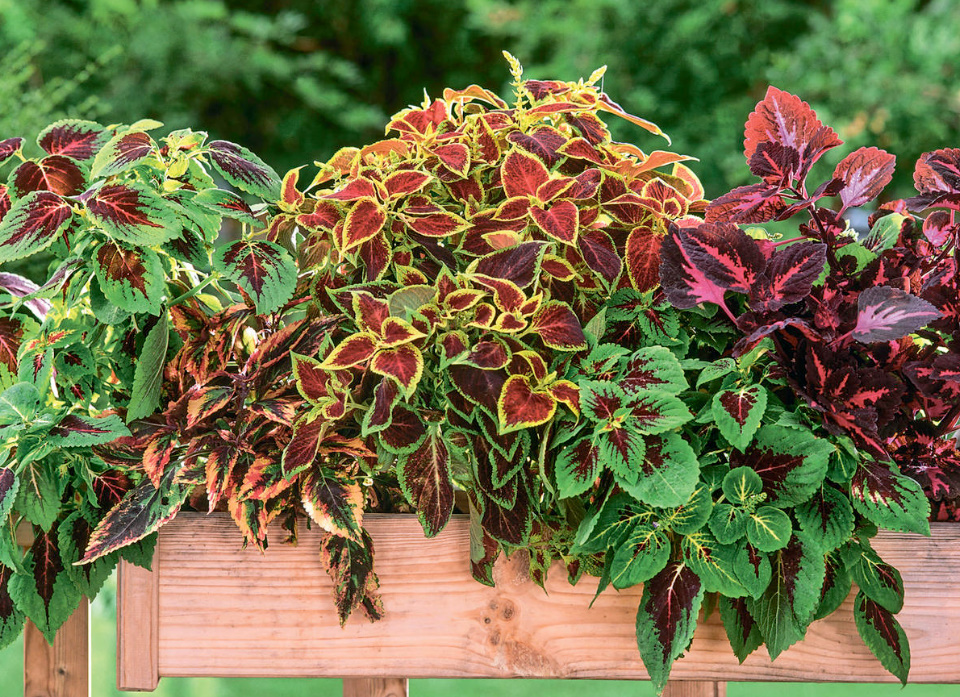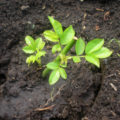Even our grandmothers considered it a good tone to decorate terraces, balconies and rooms with this plant. Today, the bright coleus is still considered one of the best among the decorative-leaved representatives of the flora.
Summer is the finest hour of Coleus. It is at this time that the coloration of the leaves is as intense as possible. It can be red, purple, yellow or green — a plant with predominantly variegated patterned leaves, sometimes with wavy or strongly dissected edges, appears in the most favorable light in a bright place (but not in direct sunlight) in the fresh air.
The main photo of the publication shows a motley company for a balcony box – multi-colored variants from the Colordance series.
In winter and summer bright color
Contemplating the amazing leaves of coleus is akin to meditation. After all, the drawing on each sheet is unique, as, for example, this three-color copy in the photo on the left.
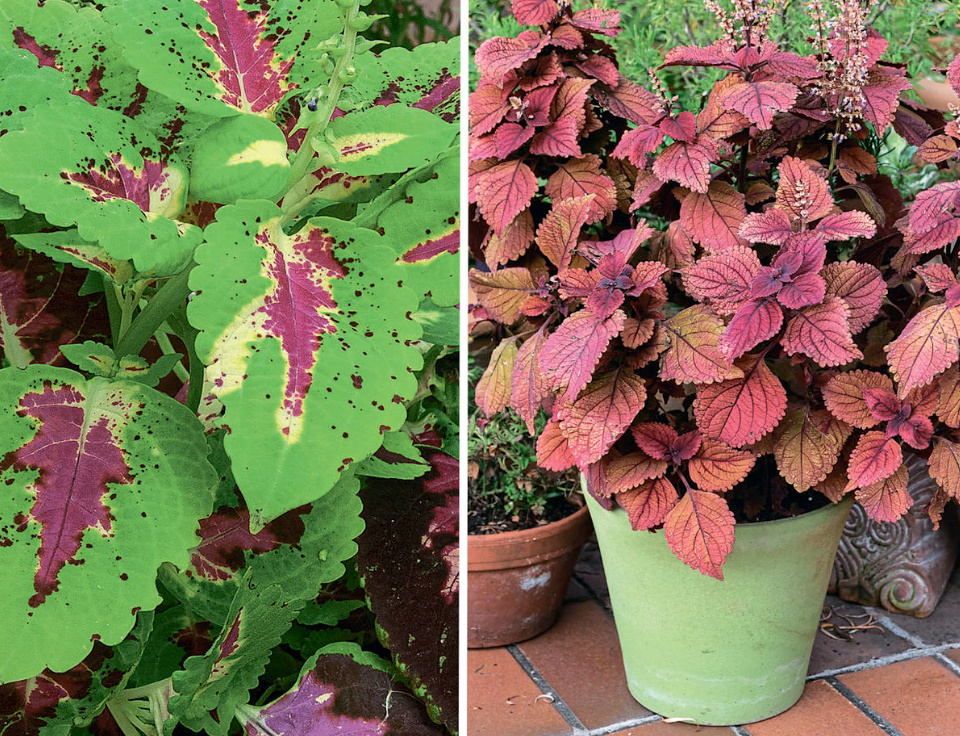
Plants with red leaves look flashy everywhere. So that such a coleus does not seem monotonous, it should be “settled” in a light pot.
In the photo on the left: take a closer look at this dark purple fashionista! This is the only way to see in detail the crimson veins and thin green rims of wavy leaves. On the right: rich red in combination with yellow-green – the coleuses of this color always look fresh and cheerful.
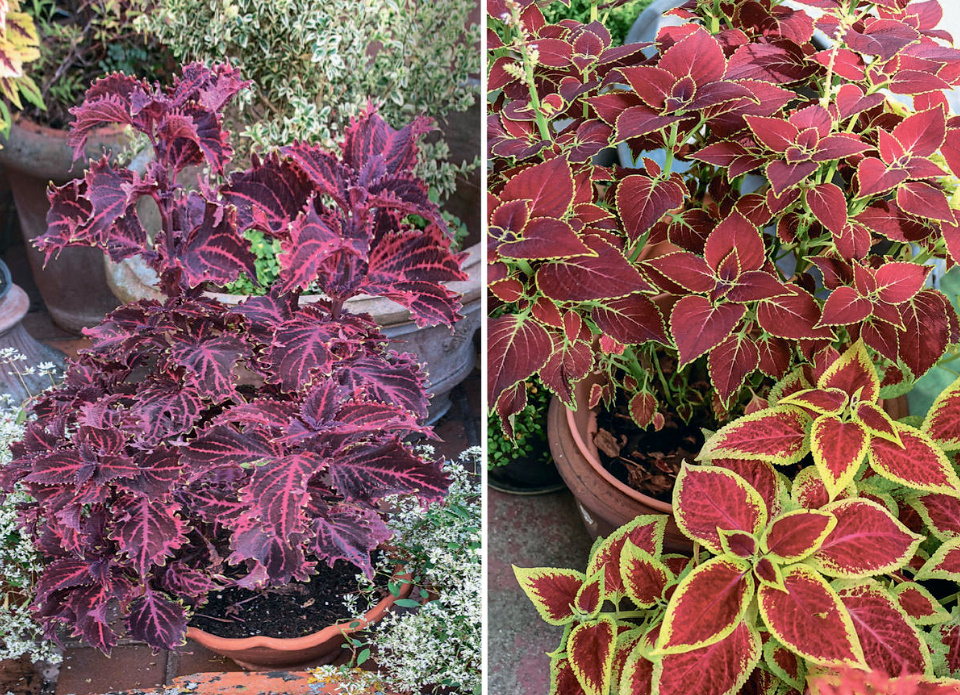
And this white-green specimen will lighten the dark corner. The highlight will be added by the orange osteospermum flowers growing nearby.
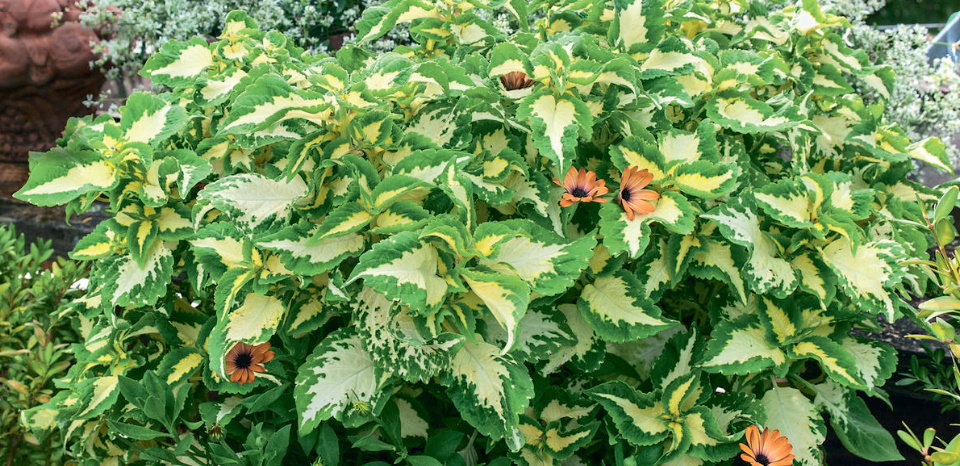
In general, there are more than 200 species of this colorful beauty, but in garden centers the most spectacular ones are most often sold — Coleus rehneltianus as an ampel plant, bushy Coleus blumei and hybrids based on it.
A simple way to reproduce
It is easiest to get new plants from green cuttings. To do this, in summer or autumn, cut off several tops of shoots with 1-2 pairs of leaves and put them in a glass of water.
Within two weeks, roots are formed, after which it is time to settle the young plants in pots with a substrate. For the winter, they should be left indoors at a temperature of + 12…+15C. At the end of May, pots with coleus can be taken out into the garden or transplanted into a flower garden, where they can be grown as annuals.
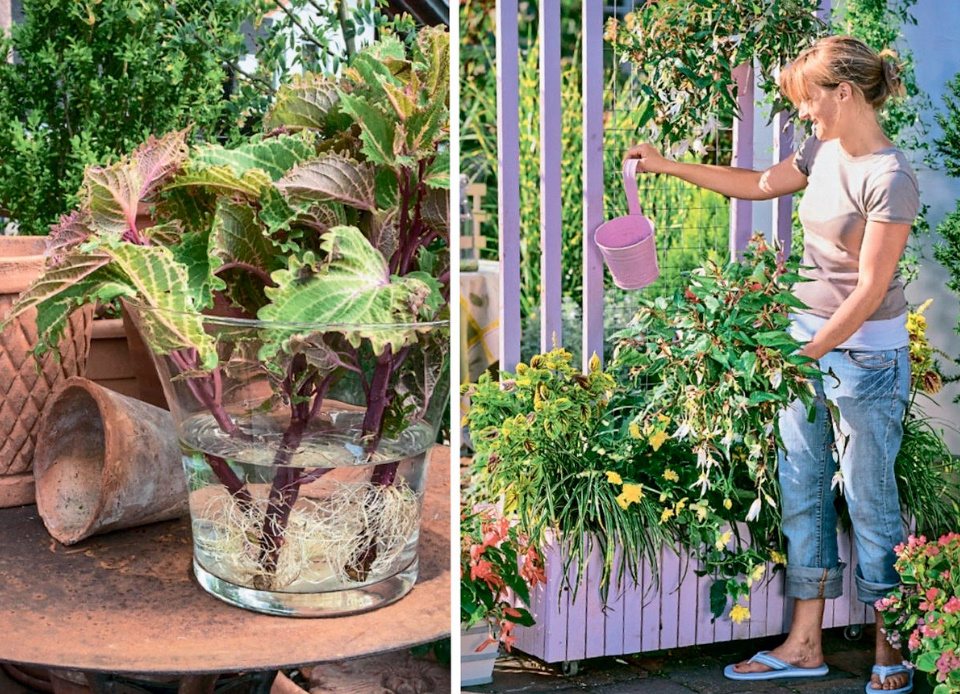
Features of cultivation and care
Coleus is a native of the tropics, so he is light— and heat-loving. For this reason, it is grown as a potted plant. You can, of course, plant it in the open ground, but here it will live only one season — or on the eve of the cold weather it will have to be moved into a pot and brought indoors.
At the same time, the coleus is unpretentious and is considered an excellent balcony plant that even a novice gardener can grow. More experienced prefer to combine it with floral partners and ornamental herbs.
In the photo: with its catchy leafy outfit, coleus is able to transform even the most boring terrace. The plant is beautiful both by itself and in the company of flower partners, such as petunia.
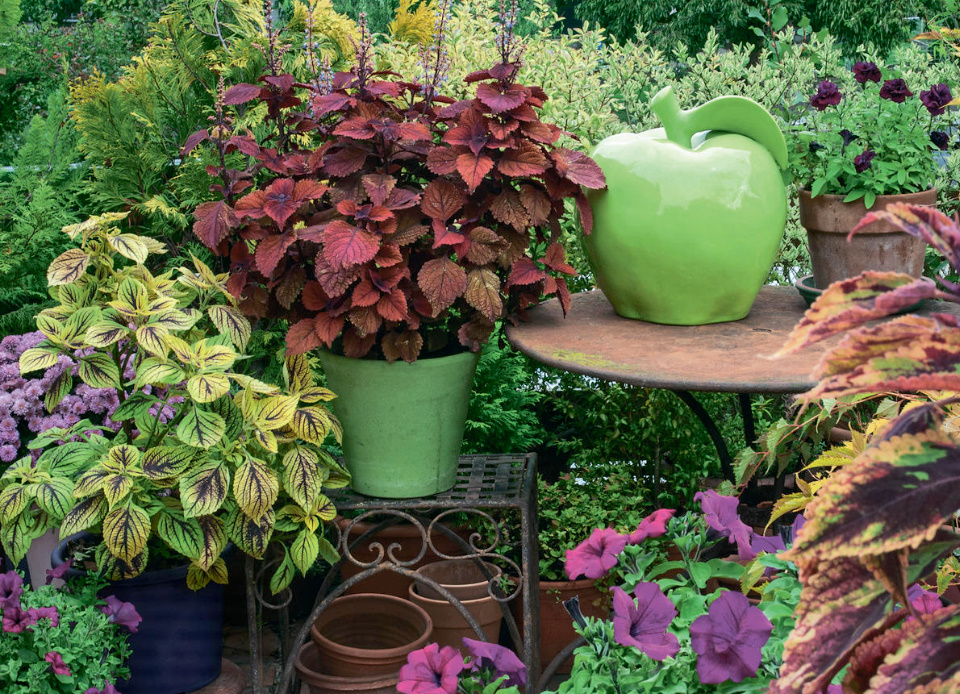
Watering and fertilizing
In summer, the need for water in the coleus is especially high. The plant “drinks” just as much in the spring. In the autumn period, the frequency of watering should be gradually reduced. Always use well-kept water! It can also be sprayed with leaves (coleus favourably treats the reception of a regular “shower”).
Also, the plant in the spring-summer period should be fed 2-4 times a month with complex fertilizers.
It is important: in order for the handsome man to retain the appearance of a compact leafy bush, shoots should be regularly pinched, and old and bare ones should be completely removed.
In winter, the coleus falls into a state of rest, that is, it almost does not grow. Therefore, care is reduced to minimal watering (it is enough not to allow the substrate to dry out) and fertilizing once a month. At this time, the plant needs coolness within +8…+15C.
In spring, on the eve of the period of active growth, all shoots should be shortened to a length of 5-7 cm.
Removal of peduncles
Summer-flowering plants, such as pelargonium or fuchsia, are liked by everyone. However, for relentless flowering, they need proper care, and regular removal of withered flowers, including. Coleus is not inferior in colorfulness to its floral counterparts, but at the same time it does not need most of the procedures at all.
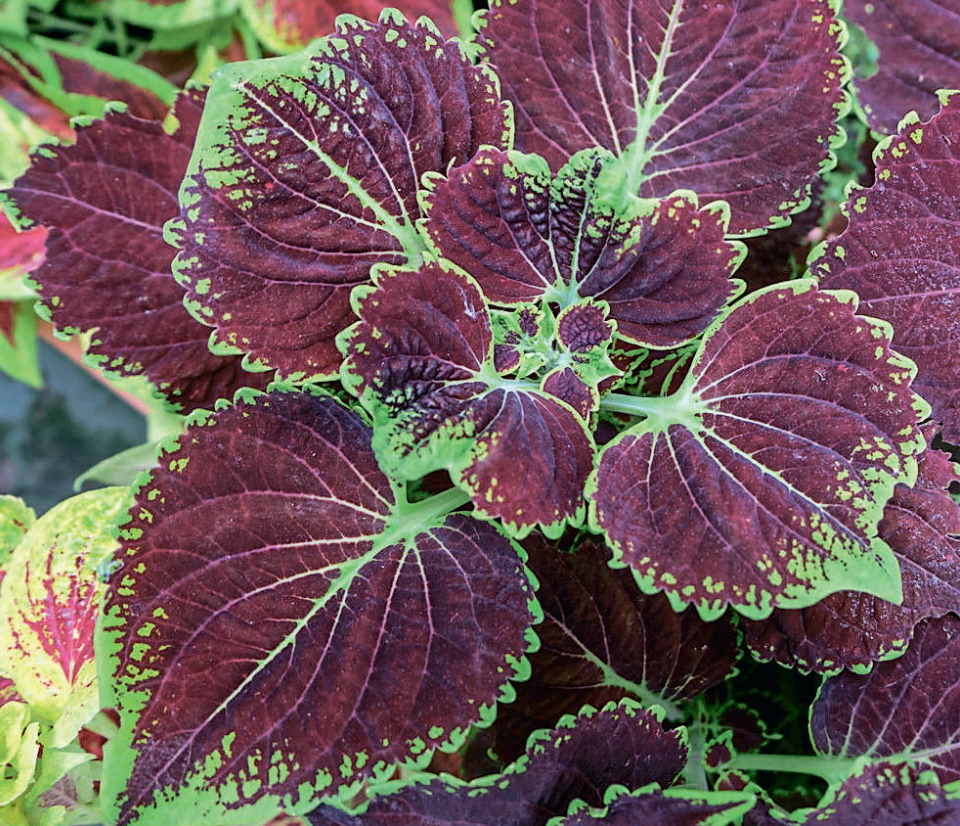
True, this representative of the Lamiaceae family also forms thin peduncles in summer, but they do not attract either beauty or aroma. Therefore, as soon as they appear, it is desirable to remove them immediately, so that the plant directs all its forces and juices exclusively to its main asset — decorative leaves.
